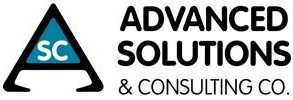When it comes time to look into replacing or upgrading your Enterprise Resource Planning (ERP) system, it’s imperative to identify the costs and benefits of this not-so-simple process. You need to understand your true Return on Investment (ROI). Shareholders and boards of directors will want to know that the investment will yield improvements greater than the money spent. Conducting an ROI analysis will help determine the time needed to recoup the financial investment while considering hidden costs and indirect benefits. Chances are, you’ll have no choice, as ROI analysis is often required to get an ERP project funded by your company decision makers.
ROI Methodology
Many different methodologies can be used to calculate ROI. All of them consider that the initial investment of replacing or upgrading an ERP system will see the majority of the money spent upfront. They will then consider a specific time frame, such as five years, to determine the amount of return over the projected life of the investment. If the return is higher than the investment over the specified period, the investment has a good ROI.
It should be noted that not making the investment also has costs, such as continued maintenance for aging equipment. This is known as “opportunity cost.” It’s always useful to compare the cost of making the investment versus not making it—especially given the tendency of legacy ERPs to become more costly to maintain over time.
ERP Project Costs
Implementing a new ERP system is a major investment that includes spending on a variety of items and services that go well beyond the cost of the software itself. A thorough ROI analysis should identify as many of the costs as possible. The proposal or quote from your ERP supplier will have most of the direct costs listed. It is also important to determine costs from any third-party supplies such as hardware or consulting services. The analysis should also consider the use of company resources, maintenance costs, training, and so forth.
ERP Project Return
Most ERP projects have a good ROI when costs are measured against direct and indirect benefits are considered. Remember, ROI actually represents a mathematical formula: (R) Return (in the form of savings and increased earnings) ÷ (I) Investment. Thus, if R = $100,000 and I=$25,000, then R÷I=400%.
The higher you can make the “R” and the lower you can make “I,” the higher the ROI will be. Cloud native ERP solutions, such as Acumatica, contribute on both fronts. As a cloud ERP, Acumatica eliminates many of the initial investment costs, such as hardware and data center configuration. This lowers the “I.” In terms of “R,” Acumatica facilitiates lower system administration costs and improved employee productivity.
For example, Acumatica enables reduced inventory carrying costs due to better tracking and need predictions. It also helps increase productivity due to process automation and reduce waste materials through the ability to make better-informed decisions with real-time data. Indirect benefits of the system include improved employee retention and productivity, more stable schedules and less expediting, and the ability to make smarter moves within the market.
ERP Investments are Easy to Justify
Replacing or upgrading an ERP system is generally a good investment, even if it seems large at first glance. Conducting an ROI analysis and considering all costs and benefits will assist in deciding which ERP system will meet your company’s needs.
LEARN MORE IN OUR GUIDE: Return on Investment (ROI) Analysis for ERP Replacement
Getting funding for a new ERP system is simple in theory: you just have to convince your decision-makers that your project’s benefits will exceed the costs. The tough part is to account for hidden costs on one side of the ledger, and indirect benefits on the other.
How can you perform an ROI analysis that presents your executives with a complete, airtight case for ERP? Find out in “Return on Investment (ROI) Analysis for ERP Replacement.” In this white paper, you’ll learn how to:
- Use two proven methods to calculate your ROI from ERP.
- Pinpoint all project costs—even the “hidden” ones.
- Identify the direct and indirect benefits of your ERP project.
- Predict and measure your future business success.
- Maximize your chances of business improvements, savings, and a financial return.
Don’t miss this comprehensive, step-by-step guide.

